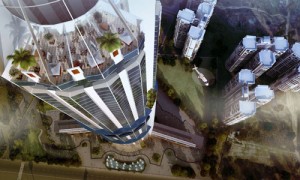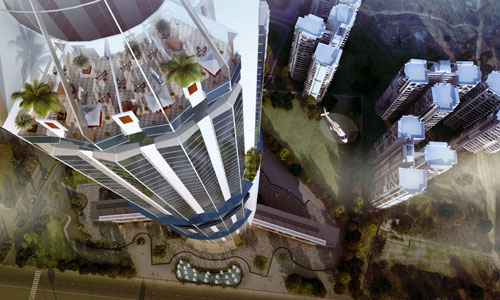By: Ravi Sinha
Track2Realty Exclusive
2nd of the series
 Realtors crib that they are often dwarfed by regulation. For constructing a skyscraper, one has to go through various regulatory approvals and committees like the high-rise committee, aviation committee, the chief fire officer and the environmental clearance.
Realtors crib that they are often dwarfed by regulation. For constructing a skyscraper, one has to go through various regulatory approvals and committees like the high-rise committee, aviation committee, the chief fire officer and the environmental clearance.
“These committees are not transparent in their working and getting approvals take a long time,” says Lalit Kumar Jain, President of Confederation of Real Estate Developers’ Associations of India (CREDAI). “On an average, it takes around four years to get in all the necessary approvals and the work to begin,” he recently said.
What makes the sky high fantasy even more interesting is the fact that skyscrapers have historically been controversial across the world. In the Bible, the construction of the Tower of Babel, one that aspired to reach into the heavens, was seen as an act of hubris against god. In terms of modern urban development, skyscrapers have been linked with bouts of bad luck for companies that move into them.
In late 2000, Time Warner began work on its skyscraper headquarters, at that time the costliest project in US history. A few months later, the company merged with AOL, among the most pilloried mergers ever. Retailer Sears’ fortunes and stock price began to slide after it moved into its newly-constructed Sears Tower in 1973, reported Fortune in a 2005 article called “Curse of the Skyscraper”.
In India also a report by Barclays Capital Research suggeststhat boom in skyscraper construction is a sign of impending recession. It says India, which is building the world’s second-tallest skyscraper, indicates that an economic slowdown is imminent. Barclays’s analysts led by Andrew Lawrence believe, “high buildings are typically driven by cheap and available capital, high land values, high construction costs, and therefore mark the cyclical peak of the credit cycle. The higher the building, the often more abundant and cheaper capital is relatively.”
The report led to a debate among Indian market watchers where Anshuman Magazine, Chairman and Managing Director (South Asia), CB Richard Ellis dismissed the premise of the report. “The whole of India has fewer skyscrapers than just the Manhattan area. Even if all the 14 towers come up, we would still have far lesser number of towers than Singapore or even Hong Kong,” Magazine says.





